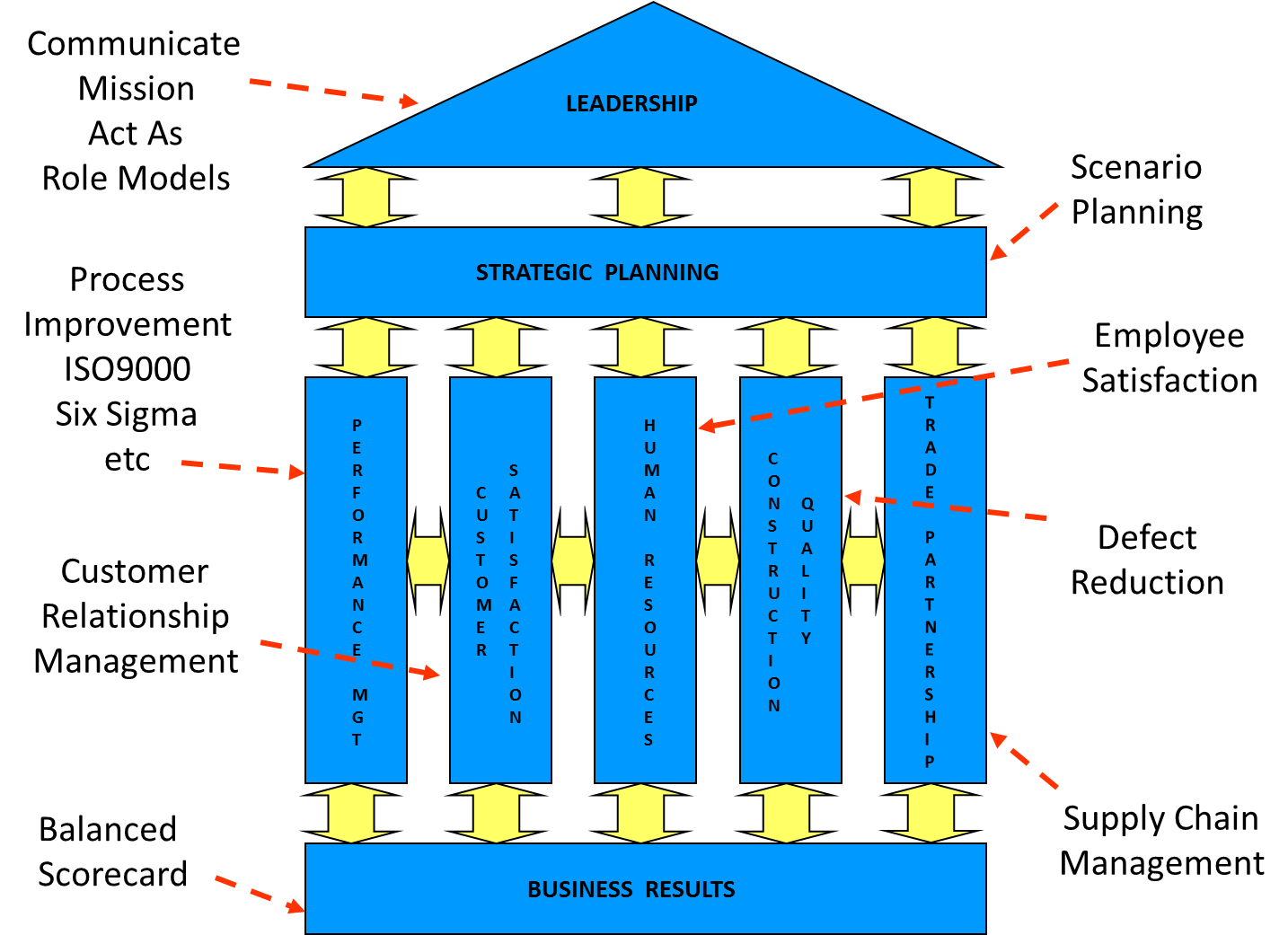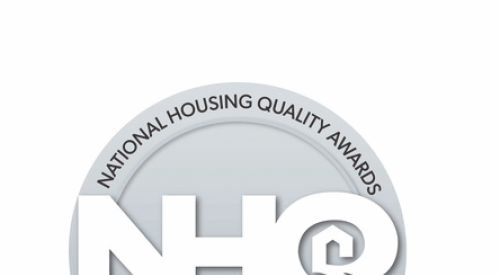The NHQA consists of a set of eight criteria but how does it actually function?
The criteria does not consist of isolated standalone elements, they interact and support one another in a systems approach. The following model has been developed to articulate how the NHQA criteria functions and interacts. The model follows the logical flow already used in the order of the criteria.
Leadership is placed at the top of the model, the apex, it is from here that the owner, CEO and senior management face the future, motivate and direct the organization. However, it is critical that leaders are not isolated from the rest of the organization or the competitive environment in which it functions. Two-way communication is essential for leadership with all its stakeholders including internal customers (employees) external customers (homebuyers) trade partners and suppliers (and other stakeholders) so that information about the organizations performance and the changing marketplace is constant. This communication allows the organization to not simply react quickly but to become proactive. Leadership also needs to have an effective way to gather this information and coordinate the operational and tactical plans to achieve the mission and vision of the organization. To achieve this, a strategic process is essential.
The strategic process coordinates with all of the departments and functions in the organization and ensures that a silo effect or isolation within departments does not occur. In this regard the strategic process effectively focuses all efforts on the mission and vision of the organization, ensuring that the operational and tactical goals align to support the strategic goals. It is also important that two-way communication of information is conducted throughout the strategic process. In the model the strategic process sits below leadership acting as a coordinator with all other aspects of the organization and therefore, all other aspects of the criteria. Without this strategic process, leadership is isolated and can only attempt to drive their beliefs through individual departments with little coordinated or aligned impact.
Below the strategic criteria are the core elements or building blocks of the criteria that focus on the functioning of the organization and incorporate performance management, customer satisfaction, human resources, construction quality and trade partnerships. This in effect impacts every function and department in an organization. The critical issue here and which is reflected in the arrows used in the model, is that these are not individual isolated functions. They must interact in two-way communication with each other to function effectively.
At the base of the model is the foundation, where the impact of the successful interaction and functioning of an effective and efficient organization produces the results. These results may be both financial and non-financial in nature and will relate to all of the core elements of the model. Two-way communication of the monitoring and measuring of these results is as essential here as in the other elements. These results reflect the success of the strategy and ultimately, leadership. The strength of this model and its impact in running an effective organization is in how all of the elements of the organization interact and depend on each other just like the structural elements in a house.
The question of course is, how strong is your ‘House of Quality’?
NEXT TIME, The Value of Checklist and Audits












